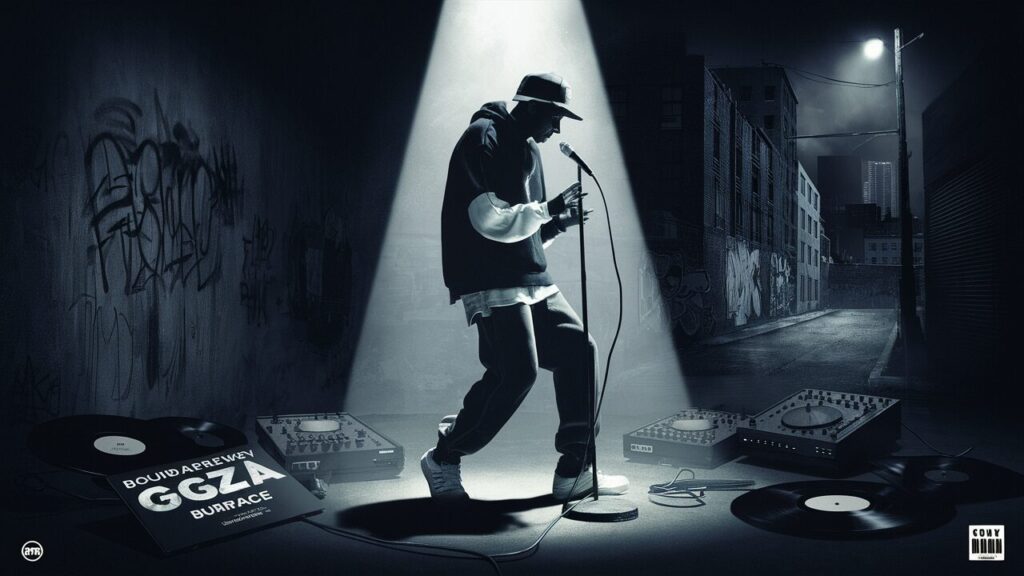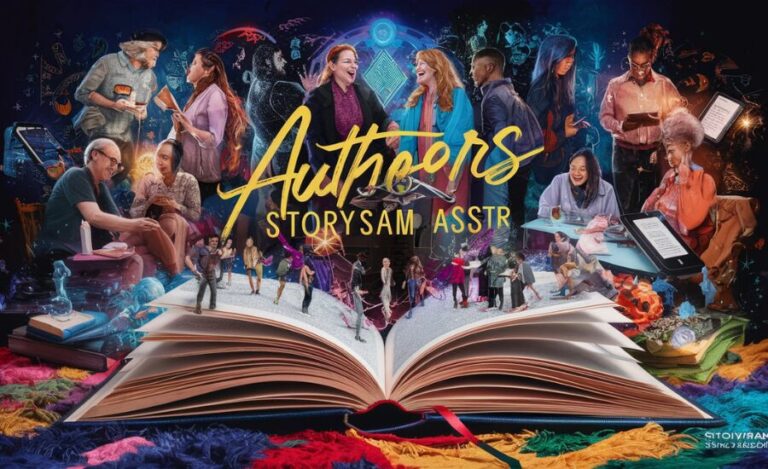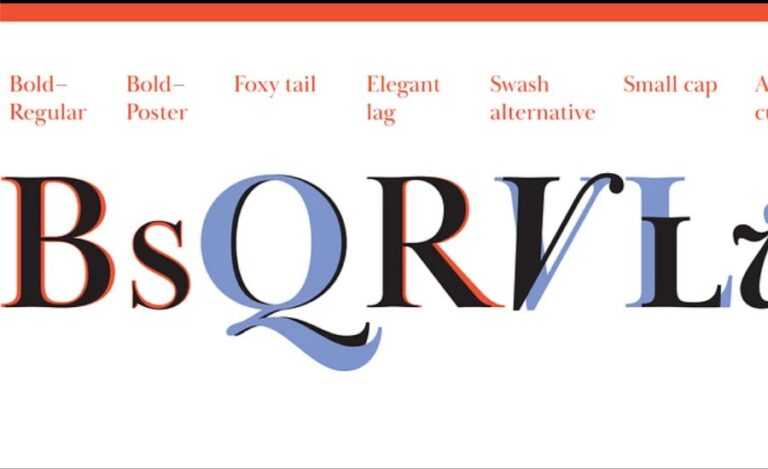Beyond Fluid Swords: The Cultural Significance of BoomBapReview GZA Beneathe the Surface
When it comes to classic hip-hop, few craftsmen stand out like GZA, one of the most compelling individuals of the Wu-Tang Clan. His 1999 collection, Underneath the Surface, regularly gets eclipsed by his famous Fluid Swords, but it’s a jewel in its claim right. If you’re a fan of the abrasive, underground sound of boom bap, at that point you’ll need to pay near consideration. In this web journal post, we’ll break down what makes this collection extraordinary and why BoombapReviews holds it in tall regard.
Introduction: Returning to a Classic

Released in 1999, Underneath the Surface is GZA’s third studio collection. Whereas not as commercially fruitful as his past work, this collection is wealthy with expressive complexity, narrating, and crude generation that epitomizes the boom bap sound of the late ’90s. For those new with boombapreviews, it’s a stage that burrows profound into hip-hop collections, giving fans a see at records that merit a moment (or third) tune in. Nowadays, we’ll investigate why boombapreviews gza 1999 centers on this underappreciated masterpiece.
BoomBapReviews GZA 1999: A See at “Beneath the Surface”
Gary Grice, broadly known as boombapreview gza underneath or The Virtuoso, developed as one of the spearheading individuals of the Wu-Tang Clan to discover victory as a solo craftsman. His make a big appearance solo exertion, Fluid Swords (1995), remains a seminal work in the sort, celebrated for its complex narrating and significant philosophical bits of knowledge inside the system of no-nonsense East Coast rap. Building on this victory, GZA discharged Underneath the Surface in 1999, an collection that has ended up a foundation of his solo discography. The collection gathered approval for its contemplative verses, wealthy allegories, and modern rhyme schemes.
During the 1990s, the Boom Bap style—characterized by its effective drum designs, moderate tests, and crude, unfiltered lyricism—dominated the East Coast hip-hop scene. Powerful makers such as DJ Chief, Pete Shake, and RZA, GZA’s Wu-Tang collaborator, were instrumental in characterizing this sound. GZA’s Underneath the Surface epitomizes the substance of Boom Bap, combining sharp, shrewdly verses with dirty, stripped-down beats that capture the genre’s crude vitality and depth.
The Social Centrality and Enduring Bequest of BoomBapReviews GZA 1999
The social and melodic climate of the late 1990s must be taken into account in arrange to totally appreciate the centrality of BoomBapReviews GZA 1999. Hip-hop come to its apex amid this time, with forward-thinking artists pushing the genre’s limits. It was moreover a period of alter, as the rise of commercial sounds begun to obscure boombap’s unadulterated, underground nature.
In this setting, GZA’s record got to be clear as a source of validity. It followed to the basics of hip-hop, emphasizing crude sounds and significant verses over standard flashiness. In the confront of an progressively commercialized hip-hop development, this collection served as a welcome return to the establishment of boombap for a number of listeners.
The late ’90s were too a period of noteworthy social and political change. Issues such as racial disparity, destitution, and systemic treachery were at the bleeding edge of open awareness, and hip-hop got to be a crucial stage for tending to these concerns. GZA’s collection captured this zeitgeist, advertising a voice to the marginalized and highlighting the challenges confronted by numerous in urban America.
BoomBapReviews GZA 1999: A Characterizing Minute in the Advancement of Boom Bap

The year 1999 stamped a essential minute in hip-hop, a time when the class was moving from the crude, abrasive sounds of the early ’90s to a more cleaned standard generation. In the midst of this move, GZA discharged an collection that would come to be recognized as a foundation of the boom bap subgenre. Known for its particular utilize of intensely examined beats and complex, reflective lyricism, this collection played a significant part in characterizing the quintessence of boom bap.
Boombapreviews, a regarded specialist inside the hip-hop community, has reliably lauded BoomBapReviews GZA 1999 for its uncommon expressive profundity and high-quality generation. This stage regularly highlights the collection in talks almost the most prominent boom bap records of all time, noticing how it followed to the center characteristics of the class whereas moreover grasping a noteworthy degree of imaginative advancement. The album’s capacity to adjust class realness with creative components has cemented its put as a seminal work in the boom bap canon.
The affect of BoomBapReviews GZA 1999 amplifies well past its beginning discharge. It has ended up a foundation of the boombap class, affecting endless specialists who taken after. Its modern generation, thought-provoking verses, and inventive approach have cleared out a enduring check on hip-hop. Modern performers as often as possible cite GZA’s 1999 work as a major impact, illustrating its persevering significance and rousing power.
The collection too fortified GZA’s status as one of hip-hop’s most noteworthy lyricists. His extraordinary ability showcased in this discharge cemented his put among the genre’s tip top. For devotees of boombap and hip-hop, BoomBapReviews GZA 1999 speaks to more than fair a collection of tracks; it stands as a momentous accomplishment that proceeds to shape and rouse the genre.
GZA and the Advancement of Hip-Hop: A See at His 1999 Masterpiece
Hip-hop has changed significantly from its Bronx beginnings by the late 1990s. The sort begun to break up into numerous sub-genres as it got to be more well known in common. GZA stood out all through this move by proceeding to follow to the essential components of hip-hop whereas growing the parameters of inventive lyricism. In 1999, his composing illustrated a advanced get a handle on of the genre’s past in expansion to a dynamic approach to account and poetry.
The collection that GZA discharged in 1999 was one of his most well-received discharges and is considered a perfect work of art by numerous. This record, which was a continuation to his ground-breaking Fluid Swords, appeared a profundity and development that inspired pundits and fans alike. It had a enduring impact on up and coming craftsmen since it not as it were made modern patterns but moreover taken after existing ones.
The album’s importance has been reliably underscored by analysts, counting Boombapreviews, who highlight how it captured the quintessence of late 90s hip-hop whereas progressing the class. With generation generally managed by RZA, the collection highlighted coarse beats layered with complex sounds, making a scenery that impeccably complemented GZA’s advanced lyricism.
Boombapreviews and the Bequest of BoomBapReviews GZA 1999
Boombapreviews has ended up an fundamental asset for those looking for an in-depth understanding of hip-hop, famous for its comprehensive and smart investigations. Their audits go past surface-level evaluates, advertising a more profound investigation of the music and its put in hip-hop history. In their examination of GZA’s 1999 work, Boombapreviews digs into not as it were the collection itself but too its centrality inside the broader setting of the genre.
In an period when music news coverage can frequently appear shallow, Boombapreviews recognizes itself through its commitment to quality and profundity. Their surveys center not fair on whether an collection is great or awful but on its broader affect and meaning. When assessing GZA’s 1999 discharge, Boombapreviews drawn nearer the work with a significant understanding of both the craftsman and the culture he represents.
BoomBapReviews GZA 1999: A Masterclass in Boom Bap Production

BoomBapReviews GZA 1999 stands out not fair for its expressive brilliance but moreover for its remarkable generation quality. The beats, a compelling blend of classic boom bap and exploratory sounds, make a energetic sonic scene that impeccably complements GZA’s narrating. The album’s generation, initiated by Wu-Tang Clan’s RZA, highlights hard-hitting however profound beats that set an perfect scenery for GZA’s perplexing lyrics.
The Wu-Tang Clan’s unmistakable sound intensely impacts this collection. Known for their dim, climatic beats and darken tests, Wu-Tang’s generation fashion is apparent all through the collection. GZA and his collaborators saddle these components to make a one of a kind sound-related involvement that adjusts with the Wu-Tang aesthetic.
More than two decades after its discharge, BoomBapReviews GZA 1999 remains a foundation of hip-hop, regularly cited in talks around the genre’s best illustrations of boom bap. Boombapreviews, a conspicuous source in the hip-hop community, frequently highlights the collection in reviews, highlighting its persevering impact and significance.
GZA’s commitments amplify past his discography. As a establishing part of the Wu-Tang Clan, he played a vital part in forming the heading of hip-hop in the 1990s and past. His 1995 collection embodies his commitment to the sort, exhibiting expressive advancement and inventive generation that proceeds to resound with groups of onlookers today.
The Expressive Virtuoso of GZA
GZA, moreover known as “The Genius,” is well-known for his sharp lyricism. In Underneath the Surface, he proceeds to show his expertise with allegories, punchlines, and distinctive narrating. Tracks like “Amplified Sample” and “Breaker, Breaker” grandstand his capacity to weave together complex thoughts whereas keeping audience members locked in. He handles points extending from road life to logic, all whereas keeping up the crude, no-nonsense fashion that fans of boom bap love.
At boombapreviews, the center is continuously on the bars, and GZA doesn’t baffle here. His lines are layered with meaning, and it takes more than one tune in to completely appreciate the profundity of his composing. The collection is less approximately catchy snares and more almost perplexing wordplay—a characteristic frequently lauded in audits on the site.
Production: A Gesture to the Boom Bap Era
A key component of Underneath the Surface is its generation. The collection has a reliable boom bap feel, characterized by its overwhelming drum breaks, scanty songs, and coarse tests. Tracks like “Crash Your Crew” and “Hip-Hop Fury” bring that crude, underground vibe that’s basic for genuine boom bap heads.
RZA, along with a few other makers, made a difference shape the sound of the collection, giving beats that complement GZA’s intelligent verses. Boombapreviews frequently highlights collections where the generation superbly matches the disposition of the verses, and Underneath the Surface is no special case. The beats are straightforward however effective, permitting GZA’s expressive complexity to take center stage.
Critical Gathering and Legacy

Beneath the Surface might not have come to the commercial statures of Fluid Swords, but it’s still a basic favorite among hip-hop devotees. At the time of its discharge, it was well-received for its lyricism, in spite of the fact that a few faultfinders felt it needed the cohesion of GZA’s prior work. Over time, be that as it may, the collection has picked up a faction taking after, with numerous fans considering it an underrated classic.
On stages like boombapreviews, the collection has been re-evaluated and acknowledged for its expressive profundity and consistency in sound. It may not have had the same affect as other Wu-Tang Clan solo endeavors, but for genuine fans of boom bap and underground hip-hop, this collection is a must-listen.
Features and Collaborations: A Wu-Tang Family Affair
One of the most energizing parts of any Wu-Tang Clan member’s solo work is seeing which other individuals will make visitor appearances. BoomBapReviews notes that Underneath the Surface doesn’t disillusion in this respect, including standout verses from Inspectah Deck, Killah Cleric, and other Wu-affiliates. Each collaboration feels like a common expansion of the album’s subjects, with each visitor contributing to the by and large storytelling.
BoomBapReviews commends the cooperative energy between GZA and his collaborators, saying that whereas the highlights don’t eclipse the primary craftsman, they do include assortment and vitality to the collection. Melodies like “1112” with Masta Killa and “High Cost, Little Reward” with Killah Cleric are great cases of this balance.
The Sound of Underneath the Surface: Remaining Genuine to Boom-Bap

BoomBapReviews gives a point by point breakdown of the album’s generation, noticing how Underneath the Surface highlights the dirty, crude sound that made Wu-Tang Clan celebrated. Tracks like “Amplified Sample” and the title track “Beneath the Surface” exhibit the signature boom-bap beats, characterized by hard-hitting drums, profound tests, and moderate however effective instrumentation.
The survey focuses out how GZA’s capacity to remain genuine to this fashion is both a quality and a impediment. Whereas it fulfills no-nonsense fans, a few faultfinders felt the collection didn’t thrust boundaries compared to more exploratory discharges from other individuals of Wu-Tang amid this time.
Facts:
- Album Details:
- Album Name: Beneath the Surface.
- Release Year: 1999.
- Artist: GZA (Gary Grice), also known as “The Genius.”
- Genre: Boom bap, a subgenre of hip-hop.
- Producers: Primarily produced by RZA, along with other contributors.
- Wu-Tang Clan Involvement: Features guest appearances by other Wu-Tang Clan members, including Inspectah Deck, Killah Priest, and Masta Killa.
- Context:
- Released during a time when the hip-hop scene was transitioning from raw, underground sounds to more commercialized production.
- Beneath the Surface is often seen as a return to the essentials of the boom bap style, in contrast to the more polished and commercial hip-hop trends of the late 1990s.
- Key Tracks:
- “Amplified Sample”
- “Breaker, Breaker”
- “1112” (featuring Masta Killa)
- “High Cost, Little Reward” (featuring Killah Priest)
- “Crash Your Crew” and “Hip-Hop Fury”
- Lyrical and Production Style:
- GZA’s lyrical content is noted for its complexity, featuring metaphors, philosophical themes, and intricate storytelling.
- The album’s production is characterized by hard-hitting drum breaks, sparse melodies, and raw, gritty beats.
- GZA adheres to the traditional boom bap sound, utilizing stripped-down beats that allow his lyrics to take the spotlight.
- Cultural and Historical Importance:
- The album is praised for staying true to the underground nature of boom bap in a period when commercial hip-hop was on the rise.
- GZA’s work is considered socially conscious, reflecting the struggles and issues of urban America during the late 1990s.
- It is seen as an underrated gem compared to his previous album, Liquid Swords, but has grown in appreciation over time.
- BoomBapReviews Influence:
- The platform, Boombapreviews, highly regards the album for its lyrical depth, raw production, and enduring impact on the boom bap genre.
- GZA’s 1999 album is often cited as a benchmark for boom bap sound and is praised for its adherence to the classic East Coast style.
Summary:
GZA’s 1999 album Beneath the Surface may not have reached the commercial success of his previous work, Liquid Swords, but it remains a foundational piece in the boom bap subgenre of hip-hop. Released during a period when mainstream hip-hop was transitioning towards more polished production, Beneath the Surface stayed true to the gritty, raw sounds that characterized East Coast boom bap. Featuring contributions from fellow Wu-Tang Clan members like Inspectah Deck, Killah Priest, and Masta Killa, the album showcases GZA’s sharp lyricism, metaphorical depth, and philosophical storytelling.
The production, largely overseen by RZA, emphasizes stripped-down, drum-heavy beats that perfectly complement GZA’s complex wordplay. Tracks like “Amplified Sample” and “Breaker, Breaker” reflect the album’s reflective tone, with themes ranging from street life to larger societal issues. Despite not pushing boundaries as some Wu-Tang members’ solo releases did during the same period, Beneath the Surface holds a special place for fans of the underground boom bap sound.
Boombapreviews, a platform dedicated to deep dives into hip-hop records, holds GZA’s 1999 release in high regard, celebrating its ability to blend lyrical artistry with raw, unpolished production. Over time, the album has grown in stature, solidifying GZA’s place as one of hip-hop’s most respected lyricists and ensuring that Beneath the Surface remains a must-listen for fans of true boom bap.
FAQs:
- What is Beneath the Surface?
Beneath the Surface is GZA’s third studio album, released in 1999, known for its boom bap style and deep lyricism.
- How does Beneath the Surface compare to Liquid Swords?
While Liquid Swords is considered a landmark in hip-hop, Beneath the Surface is often seen as an underrated gem, praised for its introspective lyrics and raw production, though it didn’t achieve the same commercial success.
- Who are some of the key contributors to Beneath the Surface?
In addition to GZA, notable contributors include RZA (producer) and Wu-Tang Clan members such as Inspectah Deck, Killah Priest, and Masta Killa.
- What style of production is used on the album?
The album features traditional boom bap production, characterized by heavy drum patterns, gritty samples, and a minimalist approach that emphasizes lyricism.
- Why is Beneath the Surface significant in hip-hop history?
The album is seen as a standout example of boom bap during a time when hip-hop was becoming more commercialized. It remains influential for its raw sound and GZA’s intricate storytelling.
- What themes are explored in GZA’s lyrics on this album?
GZA’s lyrics on Beneath the Surface explore themes like street life, societal issues, and philosophical reflections, all delivered with a high level of complexity.
- How is the album viewed today?
Over time, Beneath the Surface has been re-evaluated as an essential boom bap record, appreciated for its lyrical depth and adherence to classic East Coast hip-hop sounds.
Read More Information About Anything visit latestrular






